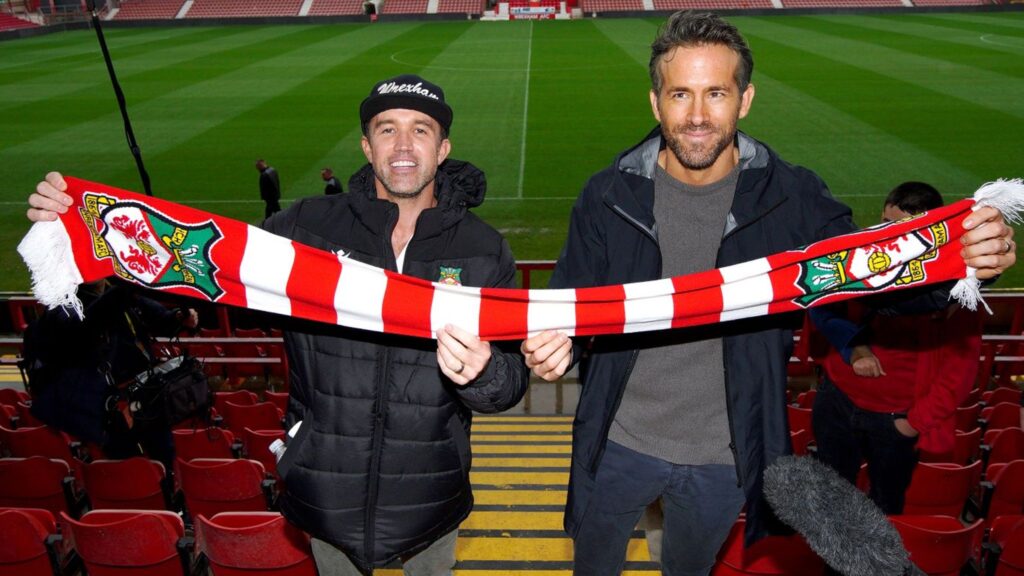Member Insights: “Does Over There work Over Here? The American-led investment in European football clubs”
October 3, 2023
Ian Whittaker, Twice City AM Analyst of the Year pens down how the involvement of American investors has become one of the main trends of the European football landscape in recent years and that seems to have accelerated in recent months.
In England, Chelsea is majority owned by Clearlake Capital while both Liverpool clubs have seen American funds invest, with 777 Partners buying out Farhad Moshiri’s 94% stake in Everton (to the relief of many Everton fans) while Dynasty Equity has taken a stake in Liverpool FC from fellow US investor Fenway Sports Group.
10 out of the 20 PL clubs are now owned by US-based owners, including (still) Manchester United. Lower tier clubs are also in the target line with NFL star Tom Brady becoming a part-owner of Birmingham City post their acquisition by Knighthead Capital Management LLC (and, of course, Wrexham FC’s famous ownership duo of Ryan Reynolds and Rob McElhenney).
However, the trend has not been confined to English clubs. Bloomberg found that 17 out of the 98 clubs across Europe’s top five leagues in 2022-23 were US owned, far ahead of the 6 from the Middle East, and that number has only increased. France’s Ligue 1 has been another country of interest, with Olympique Lyonnais and Toulouse both majority US owned. The other leagues are less impacted, mainly because their ownership structures encourage fans participation (the Bundesliga in Germany) or local owners still have a strong grip (Italy and Spain). Nevertheless, 777 Partners also owns Hertha Berlin and RedBird owns AC Milan.
The attraction of European clubs for US funds is not hard to see. Particularly the Premier League, but also the other leagues to varying degrees, have worldwide followings and lucrative revenues from both domestic and international leagues. They have passionate fan bases and strong franchises. They are also a lot cheaper than buying major US franchises in the likes of the NFL. And the explosion of interest in Major League Soccer (MLS) post-Lionel Messi’s move to David Beckham-backed Inter Miami has raised the possibility that soccer, finally, is about to take off in the United States.
Nevertheless, there is the question of whether US owners have fully thought through the implications of buying European clubs. I am not so much thinking of the cultural and management differences between Europe and the US (although there are plenty of examples of where that has been an issue) nor the fact that the US franchise model, where teams can literally be moved across the US, is at contrast with a football culture where clubs are inherently rooted in their localities. I am actually thinking more on the money side.
US sports rights are enjoying a purple patch as the major Tech giants have entered the sports rights fray and acquired major rights for large sums of money. Apple’s $2.5bn 10 year deal for US soccer streaming rights, Google’s $14bn deal to stream NFL rights and Amazon’s 10 year deal to show NFL TV rights, while raising questions over the future of traditional US sports broadcasters such as ESPN, NBC Universal and Fox, has brought a new range of deep-pocketed entrants into the game. When looking at this, it is not hard to think – if you are based in the United States – that ownership of European football assets look attractive given the smaller sums they raise, even for the Premier League.
Yet that is missing the inherently different dynamics and economics between the two markets. Sports rights are probably the one thing keeping the US linear TV landscape going. Given the desire of Google in particular to capture a large share of TV advertising revenues, the foray of the giants makes sense. The US is also a very big market, meaning that the Tech giants in particular have a good chance of also monetising the rights in other ways, mainly subscription. Americans are used to paying a lot to watch sports.
However, it is noticeable that these players have been more cautious in Europe. Yes, Amazon has the majority of Ligue 1 rights but it is no coincidence that the one European market it is the major player in football rights is the one market both where the TV rights are far less expensive than the other major leagues and its payment is relatively small. In most other major leagues, the Tech players have been relatively minor players.
The reason for that is simple. The economics do not work because the scale isn’t there and therefore the revenues in either advertising or subscriptions. European consumers are not going to pay US-style amounts for their football. That is unlikely to change.
I don’t think many US owners have grasped the full implications of this. There is a lot of hope in D2C streaming at the moment but, again, that is a US phenomenon. 85%+ of US households have Subscription Video on Demand services but for markets such as the UK, which is at the higher end of penetration, there is probably around 30%+ less takeup – and this seems more of a structural issue than one that can be resolved. As the main US streaming companies have found, what works in the US does not necessarily in Europe.
So let’s see in a decade’s time whether the interest will remain strong.
As usual, this is not investment advice.


